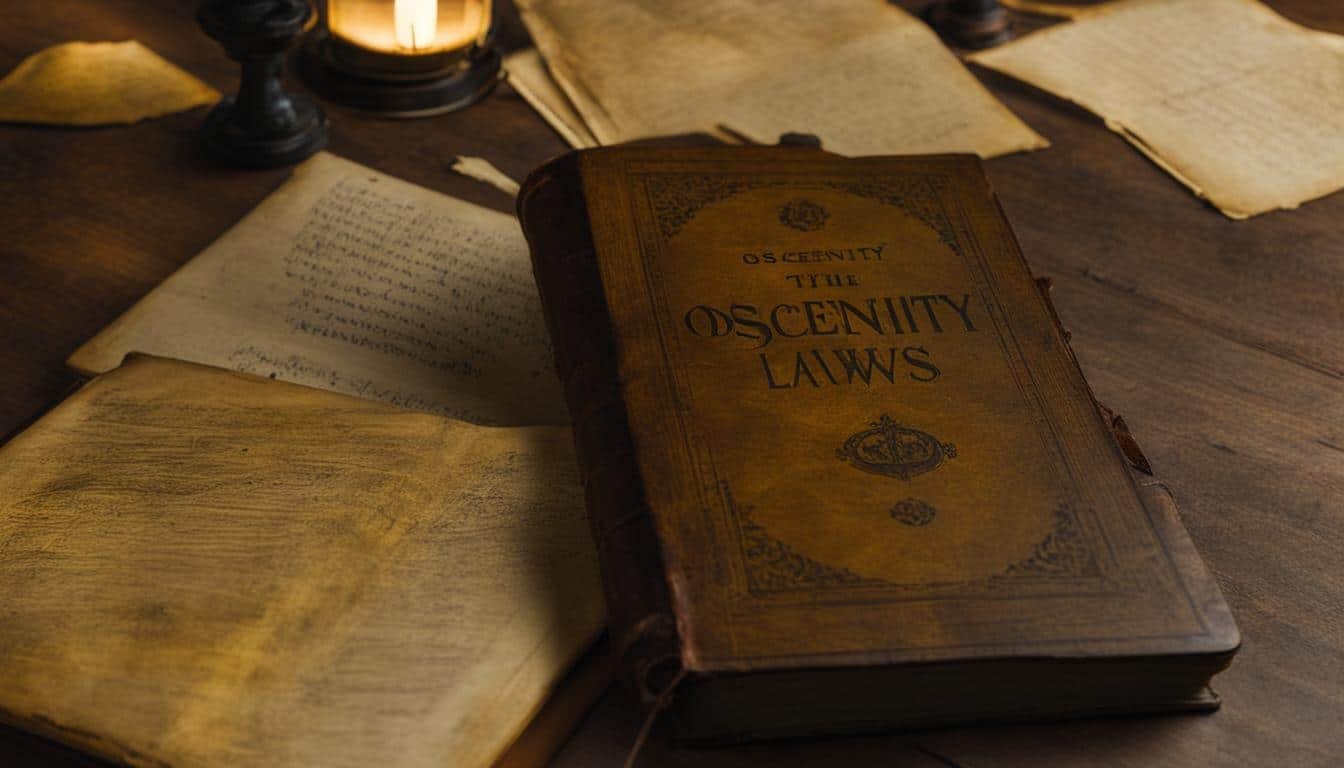Understanding the Impact of Obscenity Offenses
The impact of sex-related crimes, particularly those involving obscenity offenses, on society is a complex and multifaceted issue. Various factors contribute to the societal implications of these crimes, including prosecutorial decision making, the cultural and political landscape, and the legal framework surrounding obscenity laws. It is important to understand how these crimes shape the fabric of our society in order to develop effective strategies for prevention and intervention.
Key Takeaways:
- Sex-related crimes, especially those involving obscenity, have significant societal implications.
- Prosecutorial decision making plays a crucial role in determining the prioritization of obscenity cases.
- Obscenity laws in the United States have evolved over time, reflecting a balance between protecting morality and upholding freedom of speech.
- Protecting vulnerable populations, particularly children, is a key objective of obscenity laws.
- Acts and bodies such as CIPA, COPA, and the FCC help regulate and limit access to explicit or obscene materials to safeguard vulnerable populations.
Prosecutorial Decision Making in Obscenity Cases
Understanding the role of prosecutorial decision making in obscenity cases is crucial in comprehending the societal implications of these offenses. The decisions made by both federal and local prosecutors significantly impact the prioritization and prosecution of obscenity crimes.
Federal prosecutors, who are appointed and serve at the pleasure of the president, face a complex web of influences that may shape their decision to pursue obscenity cases. These influences can range from political pressures to resource constraints, and they play a significant role in determining whether a case moves forward. The decisions made at the federal level can have far-reaching effects on the legal landscape and societal attitudes towards obscenity.
On the other hand, local prosecutors, particularly those who face elections, are more responsive to the political preferences of their communities. This dynamic can result in variations in the prioritization of obscenity cases based on the values and priorities of the local population. Understanding the decision-making processes of local prosecutors is crucial in determining how community attitudes and preferences shape the enforcement of obscenity laws.
“The decisions made by prosecutors in obscenity cases have profound implications for both the individuals involved and the broader society. These decisions can shape societal norms, impact freedom of expression, and contribute to the prevention and intervention strategies surrounding obscenity offenses.” – Legal Expert
By examining prosecutorial decision making in obscenity cases, we gain insight into the factors that influence the enforcement of obscenity laws and the broader implications for our society. The interplay between political, cultural, and legal factors can shed light on the complex and multifaceted nature of these offenses, ultimately shaping our understanding of their impact and informing strategies for prevention and intervention.
The Evolution of Obscenity Laws and the First Amendment
Obscenity laws in the United States have undergone significant changes throughout history, reflecting the ongoing tension between protecting morality and upholding freedom of speech. The First Amendment of the U.S. Constitution guarantees the right to freedom of speech, but it also allows for the regulation of obscene material. Finding the right balance between these two principles has been a challenge that has shaped the evolution of obscenity laws and has had profound societal implications.
The Supreme Court has played a central role in interpreting the First Amendment in relation to obscenity laws. In the landmark case of Miller v. California in 1973, the Court established the Miller Test, a three-pronged test used to determine whether material is considered obscene and therefore not protected by the First Amendment. The test considers whether the average person, applying contemporary community standards, would find the material as a whole appeals to the prurient interest, whether it depicts or describes sexual conduct in a patently offensive way, and whether the material lacks serious literary, artistic, political, or scientific value.
Over the years, the interpretation and application of the Miller Test have led to significant debates and legal challenges. The Court’s decisions have shaped the boundaries of obscenity laws, striking a delicate balance between protecting freedom of speech and preventing the dissemination of material that is deemed to be morally or socially harmful. These legal developments have had far-reaching societal implications, influencing the way individuals communicate and express their ideas, as well as the broader cultural landscape.
| Year | Landmark Case | Significance |
|---|---|---|
| 1957 | Roth v. United States | Established that material must be “utterly without redeeming social value” to be deemed obscene |
| 1973 | Miller v. California | Introduced the Miller Test as the standard for determining obscenity |
| 2002 | Ashcroft v. Free Speech Coalition | Invalidated the Child Pornography Prevention Act’s virtual child pornography provisions |
| 2012 | United States v. Stevens | Struck down the Animal Crush Video Prohibition Act as violating the First Amendment |
“Obscenity should be determined by the standards of the community, not the personal sensibilities of individual judges or jurors. The First Amendment protects the right to express oneself, even if society finds the material offensive. However, that protection is not absolute, and the courts have the responsibility to determine what crosses the line into obscenity.”
Understanding the evolution of obscenity laws and their intersection with the First Amendment is essential to grasp the societal implications of regulating sexually explicit material. It involves navigating the complex terrain of constitutional principles, legal interpretations, and cultural norms, all while ensuring the protection of freedom of speech and safeguarding against potentially harmful content. By examining the historical development of obscenity laws, we gain insight into the delicate balance between individual expression and the preservation of social standards.
Protecting Vulnerable Populations: Children and Obscenity Laws
When it comes to obscenity laws, one of the most important objectives is to ensure the protection of vulnerable populations, especially children. We understand the significance of shielding our children from potentially harmful and explicit content that could have a detrimental impact on their well-being.
Several acts and regulations have been implemented to safeguard children from exposure to explicit or obscene materials. These include the Children’s Internet Protection Act (CIPA), the Children’s Online Privacy Protection Act (COPA), and the Communications Decency Act (CDA). These acts aim to regulate and limit access to content that may be inappropriate for children, specifically online.
In addition to these acts, the Federal Communications Commission (FCC) also plays a crucial role in regulating indecency, profanity, and obscenity in the media. By monitoring and enforcing community standards, the FCC ensures that minors are protected from harmful content that may be broadcasted or distributed through various media channels.
By understanding and adhering to these acts and regulations, we can collectively work towards maintaining community standards and safeguarding our children’s well-being in an ever-evolving digital landscape.
Source Links
- https://www.ncbi.nlm.nih.gov/pmc/articles/PMC5231412/
- https://www.everycrsreport.com/reports/95-804.html
- https://testmaxprep.com/blog/bar-exam/obscenity-laws







